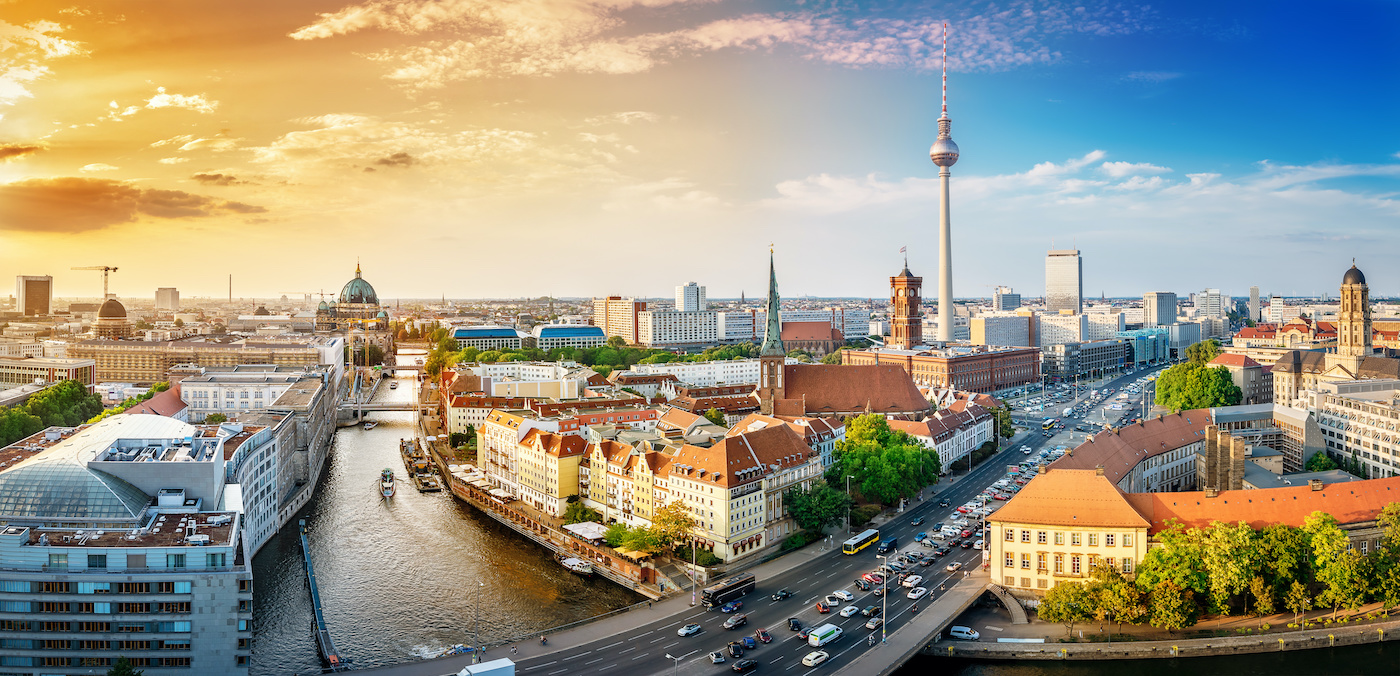Berlin

Berlin has something for everyone. From the grit and grime of the East. To the glam and glitter of the West. The German capital is a cultural hot spot of art and design.
History
The re-birth of a city devastated by war, separated and reunited is fast becoming one of the most fascinating cities. Visitors are drawn by the few surviving landmarks such as the Reichstag, Brandenburg Gate. As well as the remaining fragments of the famous wall. The fascinating history is not only retold in outstanding museums and free street displays. But also in art and the openness of the German people who still feel remnants of regret for the past.
The Jewish history museum and the German history museum are popular with visitors. Equally important is the Jewish concentration camp in Sachsenhausen. Though it has been stripped to the bare bones and is disappointingly, lacking in character. For a real taste of wartime Germany head to the Unterwelten in Brunnenstrasse. Here you will find a network of underground Nazi bunkers are secretly hidden behind a run of the mill looking green door. The film museum in Postdamer Platz is also worth a visit.
Nightlife and Attractions
The nightlife in Berlin is buzzing, with pockets of hotspots dotted all over the city. Locals head for Kreuzberg and Rosenberg Platz where Polish and Russian bars provide a unique alternative experience. Whilst tourists tend to stray to Kurfurstendamm and Alexanderplatz where glamorous clubs are reflected in the inflated prices. Bars with beer garden beaches, are another unique design popular with party goers. Berlin’s cultural diversity is reflected in the many restaurants serving recipes from all over the world. Though food and drink prices are notably cheaper in the east.
Berlin Zoo houses, Knut, the first polar bear to be born in Germany. The 35 hectares in the heart of the city is the most visited zoo in Europe. It is easily recognised by the impressive Asian architecture of Elephant Gate at its main entrance. A short walk from the zoo is Berlin’s biggest park, Tiergarten. The design for which was taken from the blueprint of London’s Hyde Park.
Travel around Berlin
As expected of the German efficiency the transport system is second to none. Trains and buses turn up regularly and on time. Fares are cheap, so make sure tickets are purchased and validated from machines on the platforms. Plain clothed ticket inspectors are not lenient when handing out large fines to anybody caught without a valid ticket.
Twenty years after reuniting, Berlin is still a tale of two cities. As a result, in part, it’s this contrast that makes Berlin a must see destination.
Travelling to Berlin by Ferry
There is currently no direct ferry between the UK and Germany. Berlin though is situated inland. So even if there was a UK-Germany ferry, driving would still be needed. The ferry that will actually get you closest to Berlin is the Harwich Esjberg ferry.
Though if you don’t mind the extra drive there are many more options with shorter crossing times and a slightly longer drive.